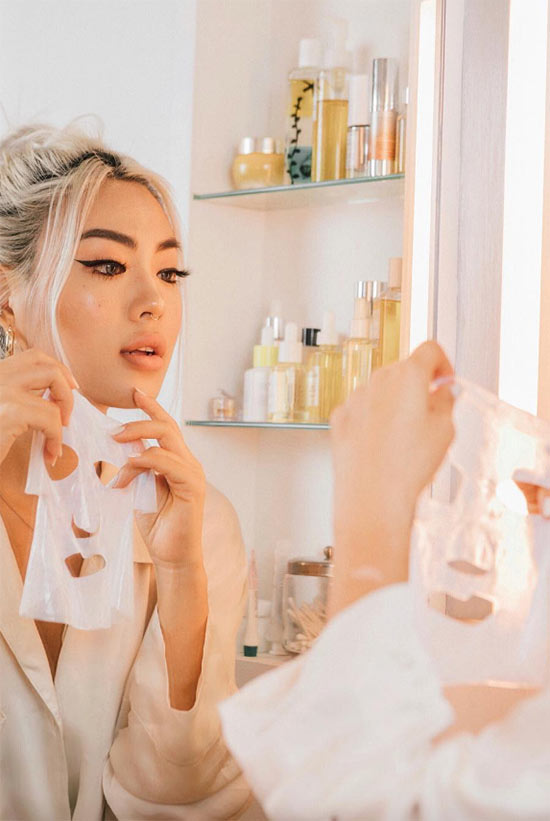Before us beauty bloggers couldn’t shut up about Korea, Japanese beauty was all the rage. Japan had a reputation for being on the cutting edge of technology, so Japanese beauty products were considered innovative and powerful.
I’ll admit that in writing this article I was surprised to learn that quite a few brands were Japanese. Certain companies, like Tatcha, rely on Japan for their brand image while targeting a Western audience, whiles others like Cle de Peau present as much more international.
Below, we explain what J-beauty is and talk a bit about the history of the Japanese beauty industry. It’s easy to confuse J-beauty with K-beauty, so we talk a bit about the relationship and differences between the two, and then finish off with a comprehensive explanation of the ultimate Japanese skincare routine.
In this article:
What Is J-Beauty? Japanese Beauty Routine Explained
Japanese beauty brands have been a big part of the mainstream beauty industry in the West for many years now. You’ll be surprised by how many beauty practices actually originated with J-beauty.
As a result, a Japanese skincare routine doesn’t look too different from a modern Western skincare routine, with the main exception being that many of the steps tend to be very gentle. This is partially because of the philosophy, but also because of regulations in Japan that restrict the use of harsh actives.
Japanese beauty products will contain skincare ingredients that have become popular all over the world thanks to their scientifically proven efficacy. Those include hyaluronic acid, niacinamide, and vitamin C, as well as popular natural ingredients like green tea extract and rosehip seed oil.
In addition to those, Japanese beauty products will often also include ingredients from plants that are native to or common in Japan, with different brands often focusing on a particular ingredient for their brand or product marketing story. Those include lotus leaf extract, reishi mushroom extract, rice ferment filtrate, and many others.
There are a few things that definitely stand out in the Japanese skincare routine. Oil cleansing, which is often associated with K-beauty, actually became popular in Japan first, and is frequently a part of it, although there are also those who cleanse once with a gentle, moisturizing gel cleanser. A Japanese skincare routine has multiple steps, which include a lotion (the term the Japanese use for toners or essences), sometimes serums, and a final moisturizer.
Alcohol is a surprisingly common ingredient in Japanese formulations, despite the bad reputation it has in the West. It shows up frequently in lotions as well as in sunscreens. Its function is to thin out the formulas so that they go on more liquidy and matte. It also ensures that they penetrate more quickly into the skin, which is important in very humid environments, but will likely not work in arid climates.
Japanese Beauty Brands
Learning about the brands is a great way of learning about the history of Japanese beauty. A great little case study is Shiseido, which is nowadays one of the biggest cosmetics conglomerates in the world with dozens of high-profile subsidiaries, including the non-Japanese NARS, Laura Mercier, and Avène.
The brand started as a pharmacy in Japan in 1872 and switched focus to producing cosmetics in 1916. In the decades that followed it had expanded significantly all over East Asia. It entered the North American market in 1965 and expanded throughout Europe in the ‘70s and ‘80s.
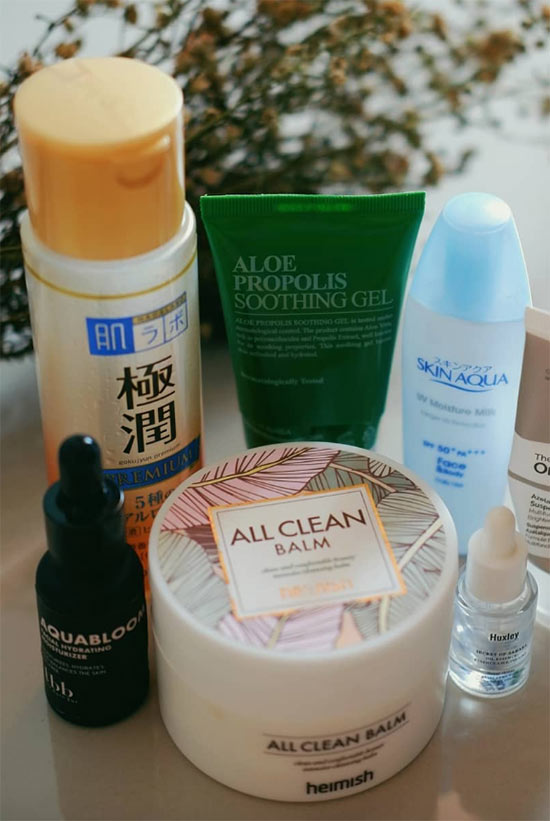
The reverse can be seen in the story of Shu Uemura. The name of the Japanese makeup artist became closely associated with the notion of oil cleansers, after he released his first oil-based makeup remover in the ‘60s after working for multiple years in Hollywood.
His brand was popular both in Japan and abroad, and was particularly well regarded when it came to oil cleansers and beauty tools like eyelash curlers. L’Oreal purchased the company from Uemura in 2004.
J-Beauty vs. K-Beauty: The Differences
For better and for worse, Japan and Korea are two countries with shared history. I’m not going to dive into the centuries-long relationship between the two countries, but needless to say that it was sometimes friendly, sometimes adversarial, and included 30 years in which Korea was under Japanese control. The result is a lot of cultural exchange that was not free of animosity.
When it comes to beauty, it means that a lot of things are very similar.
In the West, Korean products have a reputation for being “skincaretainment” with unique application methods and fun packaging, while Japanese skin care is seen as more serious and austere. However, this really only applies to the products that are sold in the West, while in Japan you can find plenty of playful beauty products.
I think a big part of the reason why Japanese beauty products seem more restrained is that the Japanese beauty industry has had closer ties to the European beauty industry for many years, and as such, the Japanese beauty products retailed in the West have been developed over many decades to appeal to the local market.
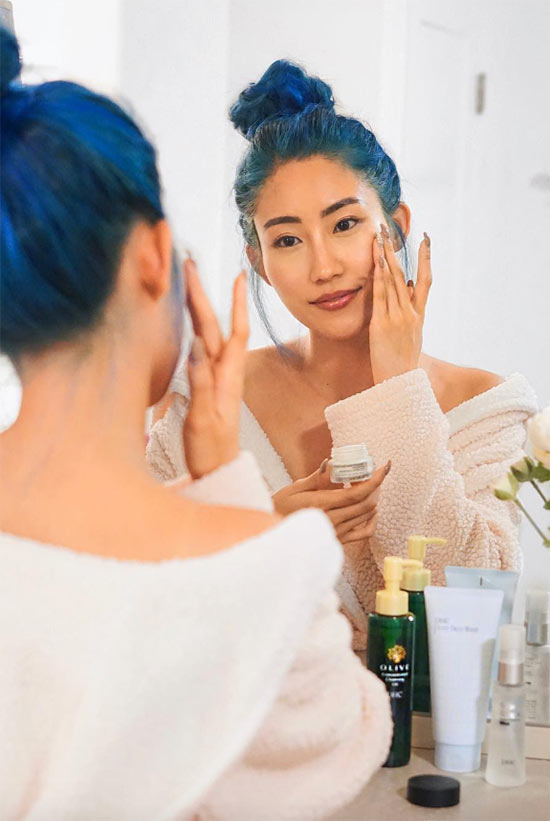
The popularity of Korean products was sudden, and as such Korean brands didn’t have time to adapt to the Western market, and in fact, their uniqueness and zaniness were part of the appeal.
Another part of this is explicit marketing, with Japanese brands trying to differentiate themselves from Korean ones and vice versa. The truth is that both countries give us a wide range of products to suit every age level and taste in packaging. These days, many people in Japan use both Korean and Japanese skincare products, in short routines or in long multi-step routines.
It is worth noting that when K-beauty was at its apex as a trend a few years ago, Sephora made a big faux pas by promoting a few Japanese beauty products under a K-beauty promotion. Naturally, Asian-American customers were unimpressed with the error, as it is difficult not to compare it to the racist notion that all Asians look alike. I gotta admit that I’m not free of guilt here, either – up until writing this article, I was absolutely convinced that SK-II was a Korean brand.
From a practical sense, I see a lot more similarities than differences. Both beauty philosophies focus on gentle cleansing and building layers of hydration in order to achieve a lustrous complexion. Additionally, both eschew harsh products and intense actives, instead preferring gentler options even if it means that results are slower to come by.
Japanese Skincare Routine Steps
Though there isn’t just a single one-and-done Japanese skincare routine, there are a few steps that are quite consistent, as well as some common practices that stand out as different from skincare routines in other countries. This sample routine highlights common products and practices, but it is no way prescriptive.
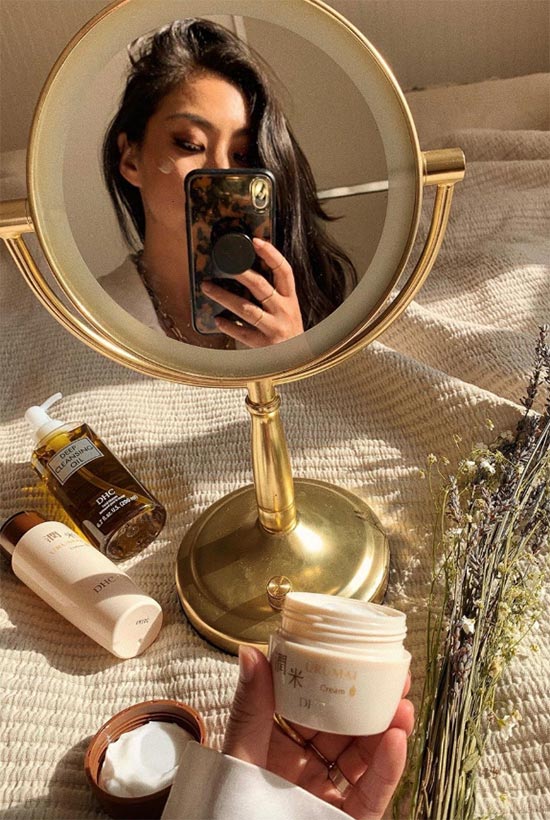
PM J-Beauty Routine
Step 1: Oil Cleanse
Oil cleansing is a staple in the J-beauty routine, and it’s also a favorite of mine. Nothing works as well to remove makeup and sunscreen without irritating the skin. Japanese oil cleansers are usually made with both oils and detergents, so you massage them onto dry skin, but then add water to emulsify them so they can be rinsed away. Japanese oil cleansers are good for all skin types.
Step 2: Foam Cleanse
Foam cleansing is very popular as the second step in the J-beauty routine. It removes traces of the oil cleanser, as well as excess oils and more deeply embedded impurities.
It can be done in two ways: either by choosing a cleanser that comes out of the dispenser as a foam, or by lathering up a bit of gel cleanser with the help of a damp foaming net. Massage the cleanser into your skin with the tips of your fingers, and make sure to apply as little pressure as possible.
Once you’re done, rinse it away with as many splashes of water as necessary. You may leave your face damp, or dry it by pressing a clean, soft towel against it (but not rubbing).
Step 3: Lotion or Skin Softener
In a Western routine we’d refer to this step as a toner while in a K-beauty routine it’d be an essence, but it’s basically the same thing: a liquid product that hydrates the skin and acts as a penetration enhancer to allow all skin care applied after it to better absorb into the skin.
Many J-beauty lotions contain alcohol to speed up penetration, but not all. You can apply the lotion to your skin with the help of a cotton pad, or you can dispense it in your hands and then press it gently into the skin. If your lotion does contain alcohol, be careful to avoid the eye area as it may sting.
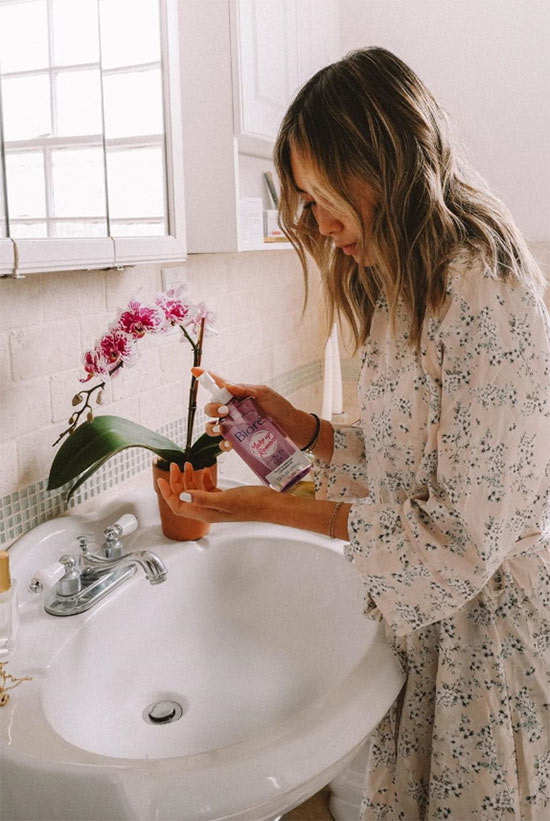
Step 4: Mask
You’ve noticed that a lot of Japanese beauty masks come in multi-packs, which I like because it saves on waste. However, there are also single-packed Japanese sheet masks for those who like to change things up.
Either way, sheet masks can be used every night, or just once or twice a week when your skin needs a boost. Japanese sheet masks should be applied the same way as Korean ones – you smooth them over the face after you’ve applied toner or lotion, and let them sit for anywhere from a few minutes to an hour.
Once you remove them, you can massage the rest of the essence into your skin. Extra essence can also go over the neck and décolleté.
Step 5: Massage with or without Serum
Facial massage is very popular in Japan. It can be done with tools like jade rollers or electric massagers, but the fingers will work just as well for the job. There are many different massage techniques you can find on Youtube if you’re interested, but the general principle is to go with the direction of the muscles and pull upwards and outwards. This can be done when the skin is dry or with the aid of a serum or moisturizer.
Step 6: Eye Cream
Eye creams are popular in Japanese beauty, and their application is similar to Western eye creams. All you need is a small amount, which you should apply with your ring finger.
Some Japanese brands recommend tapping the eye cream gently along the under-eye area, while others recommend a gentle massage going from the inner corner of the under-eye to the outer corner, and then from the outside-in over the orbital bone above the eye. You can also take a moment to massage the outer corner of the eye where crow’s feet can form.

Step 7: Moisturizer
Japanese moisturizers can come in a variety of textures, just like in the West, from bouncy jellies to milky emulsions to thick creams. Your moisturizer should be applied gently to the skin, as to avoid tugging on it or irritating it, especially if you’ve already massaged.
Dispense the moisturizer between both palms of your hand, and then gently press it into the skin using the entire length of your hand. Use your fingers to press the moisturizer over the nose.
AM J-Beauty Routine
Step 1: Lotion
The beautiful thing about the Japanese skincare routine is that it allows you to skip cleansing in the morning. If you must, you can use a facial wipe or a cotton pad saturated with micellar water, but usually just wiping your face with a cotton pad saturated with a Japanese lotion will do the trick for removing a bit of that oil build-up from the night while also hydrating your skin.
Before or after you do that, you can splash your face with cool water for a few moments to help you wake up and to add moisture to your skin. You can also plop on a morning beauty mask for added hydration.
Step 2: Serum and Moisturizer
Following your lotion, you may choose to also apply a serum to your skin, although in the humid climate of Japan people often skip this step. You can give it a go, or just straight to locking in the benefits of your lotion with a moisturizer. It can be the same moisturizer you used in the evening, or a lighter one that will sink into the skin more quickly for the daytime.
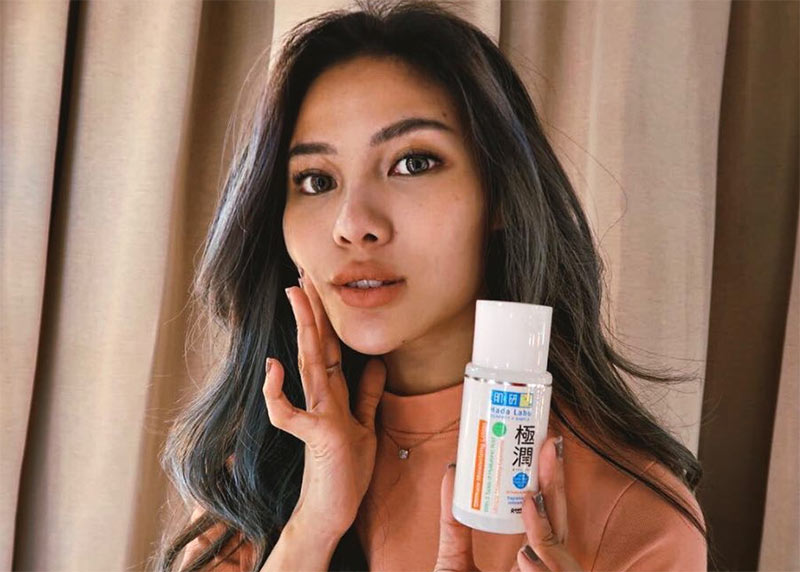
Step 3: Sunscreen
A sunscreen is a must in general, but Japanese women are especially fastidious about using it due to a beauty ideal that prizes clear, even-toned skin. Japanese sunscreens are considered the most cosmetically elegant on the market, since they don’t leave a white cast or a greasy sheen. They are often made with powerful sunscreen ingredients that haven’t been approved for use in the US yet, which is unfortunate since they are very effective while feeling light on the skin.
To gain maximum protection, make sure to apply at least a ¼ teaspoon amount of sunscreen to your face. Give it enough time to dry completely before applying your makeup for the day.
Photos via @ellenvlora, Instagram

